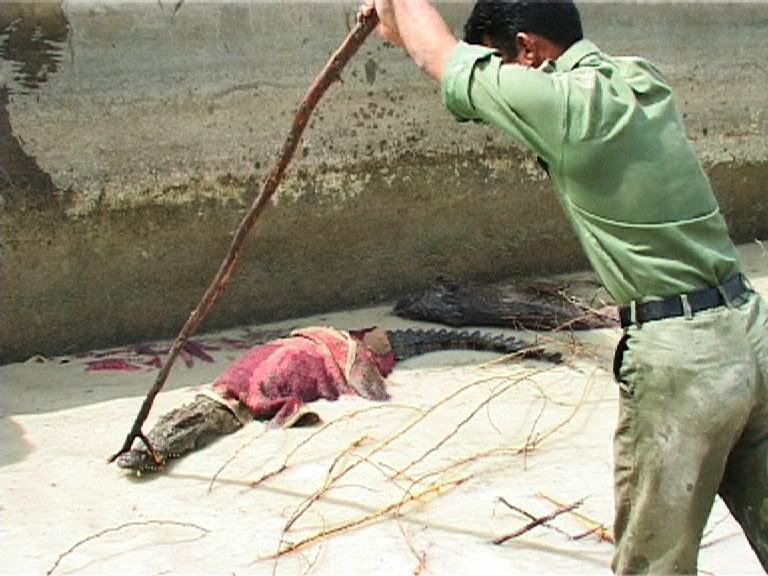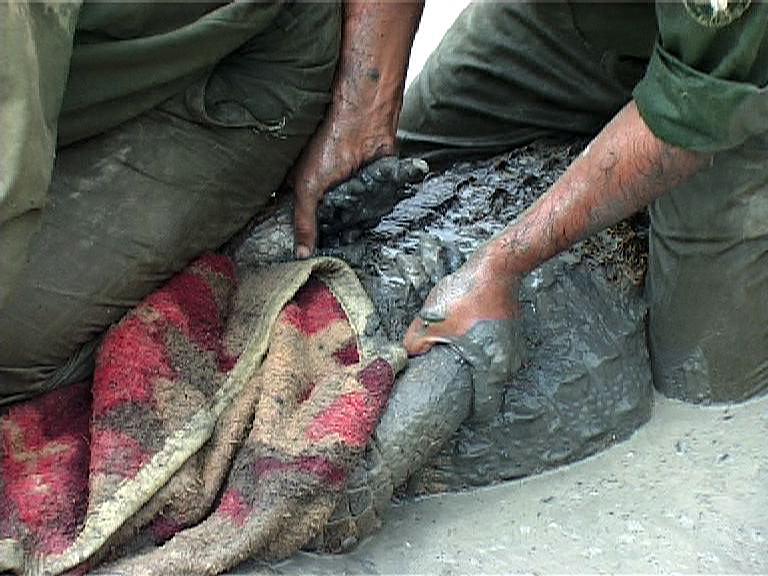The Persian Crocodile
Crocodile–human relationships are still largely unexamined in cinema, which no doubt has to do with the reptile’s unwillingness to engage in attempts to get closer. Also in Houchang Allahyari’s and Maziyar Moshtagh Gohary’s documentary The Persian Crocodile, this relative of the dinosaurs is mainly experienced with a wide open jaw—prepared to defend against human advances with a sudden snap at any moment. However, in this case, the crocodile, a particularly impressive example due to its size, desperately needs help as it has become imprisoned in a cistern following a flood in the southeast Iranian city of Balutschestan. It has no chance of escape on its own. A stand-off: on the one side, a frightened, recalcitrant animal, and on the other, two men who want to free it but are not so sure of how.
Allahyari’s film pursues the luck of a “found situation”—an "animal trouvé," as it were. The Austrian-Iranian director was doing research on a project when he came across this archaic, real-time drama in the course of which a confrontation unfurled whose dramatic progression contained a parable-like tone: the approach to the reptile, its capture (with carpet, net, and rope) as well as the multiply repeated failed attempts can be viewed as an example of human inexperience in subjugating nature. Allahyari and Gohary (who even helped briefly in the rescue action) focus closely on the highly amusing event in which sympathy, like in a boxer drama, gradually turns to the side of the one who successfully resists. Only, this is not a meeting of opponents in an athletic match, but instead, a clash of two entirely different perspectives on how to survive.
(Dominik Kamalzadeh)
Translation: Lisa Rosenblatt
Das persische Krokodil
2012
Austria
58 min
Documentary
Farsi
English



